INTRODUCTION
Table 1
Indications of reverse controlled antegrade and retrograde tracking technique

CONTROLLED ANTEGRADE AND RETROGRADE TRACKING TECHNIQUE
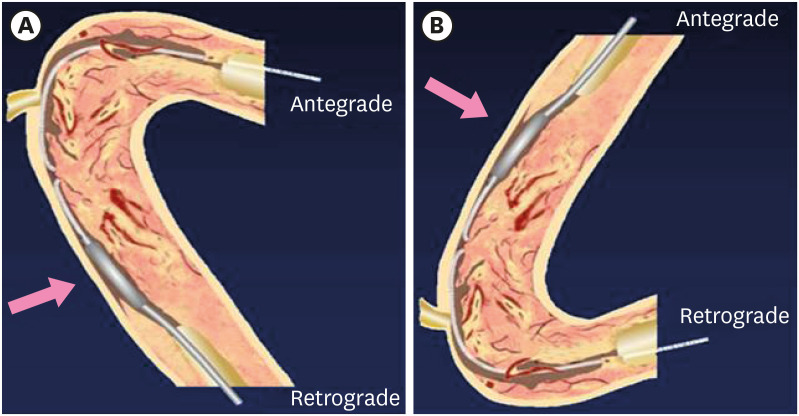 | Figure 1Schematic illustration of CART (A) and reverse CART (B). (A) Antegrade navigation of guidewire through the CTO into distal true lumen through a local subintimal dissection crated by retrograde balloon (pink arrow indicates retrograde balloon). (B) Retrograde navigation of a guidewire through a subintimal space created by antegrade balloon (pink arrow indicates antegrade balloon).CART = controlled antegrade and retrograde tracking; CTO = chronic total occlusion.
|
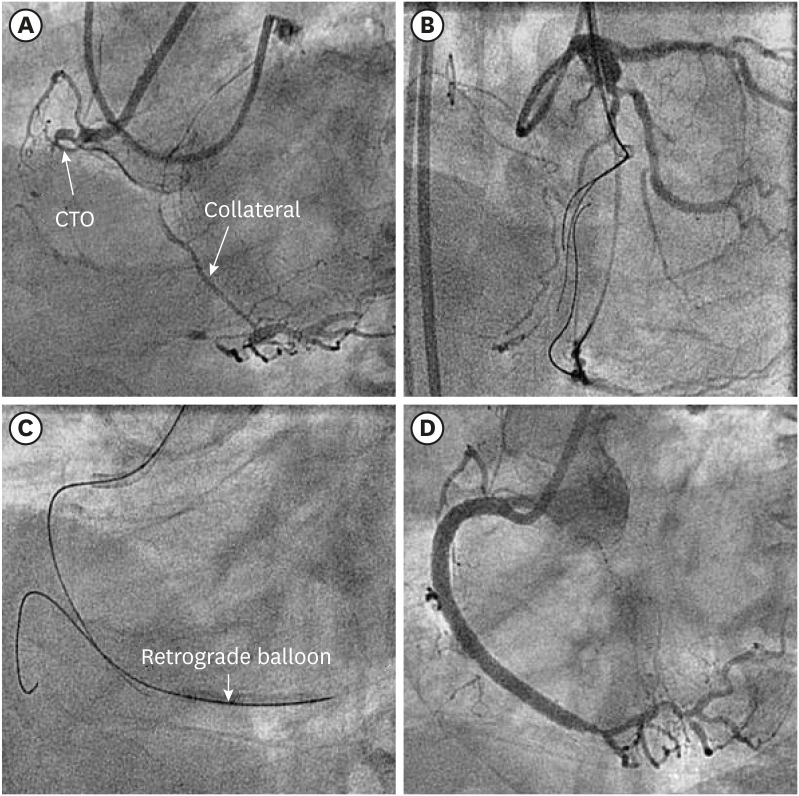 | Figure 2Depiction of CART technique in CTO. (A) A baseline coronary angiogram showing CTO of proximal RCA with good epicardial collateral channel from LCX. (B) Navigation of retrograde guidewire in epicardial collateral with support of microcatheter. (C) Dilatation of subintimal space with a retrogradely followed by antegrade guidewire advancement along the deflated balloon. (D) Final result after three overlapping DES in RCA.CART = controlled antegrade and retrograde tracking; CTO = chronic total occlusion; DES = drug-eluting stent; LCX = left circumflex artery; RCA = right coronary artery.
|
REVERSE CONTROLLED ANTEGRADE AND RETROGRADE TRACKING
Table 2
Microcatheters used in CTO PCI
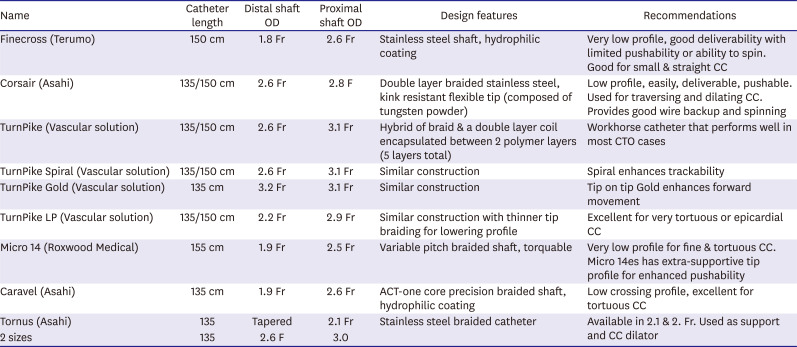
Table 3
Comparison of CART and conventional reverse CART

Conventional reverse controlled antegrade and retrograde tracking
 | Figure 3Schematic illustration of the conventional reverse CART technique. (A) A longitudinal overlap of the antegrade and retrograde guidewires in a case of proximal RCA CTO. (B) Delivery of a balloon over the antegrade guidewire to the point of guidewire overlap. (C) Inflation of the balloon. (D) Creation of a connection is between the spaces (CSS) containing both the guidewires. (E) Navigation of the retrograde guidewire through the CSS. (F) The subsequent advancement of the retrograde guidewire into the proximal true lumen.CART = controlled antegrade and retrograde tracking; CSS = common subintimal space; CTO = chronic total occlusion; RCA = right coronary artery.
|
Table 4
Comparison of conventional and contemporary reverse CART

Assisted reverse controlled antegrade and retrograde tracking
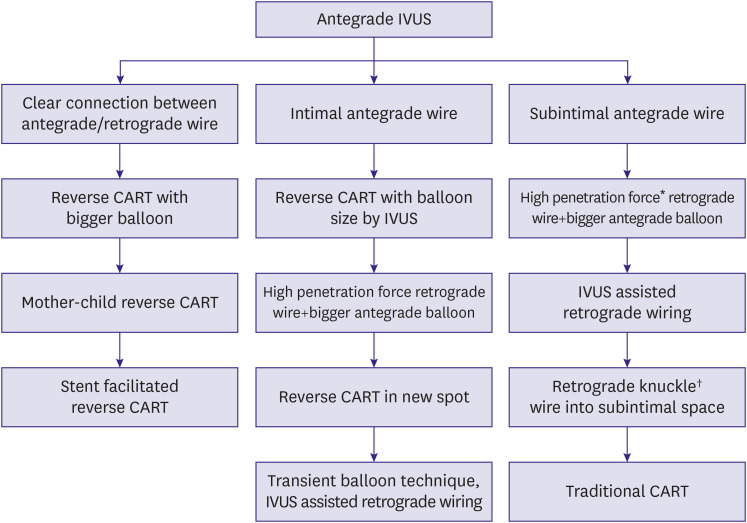 | Figure 4IVUS assisted reverse CART.IVUS = intravascular ultrasound; CART = controlled antegrade and retrograde tracking technique.
*High penetration force wire: Gaia Third, Conquest 12(Asahi Intecc, Aichi, Japan), Hornet 14 (Boston Scientific, Marlborough, MA, USA); †Knuckle wire: Fielder XT (Asahi Intecc, Aichi, Japan), Pilot 200 (Abbott Vascular, Santa Clara, CA, USA).
|
Intravascular ultrasound assisted reverse controlled antegrade and retrograde tracking
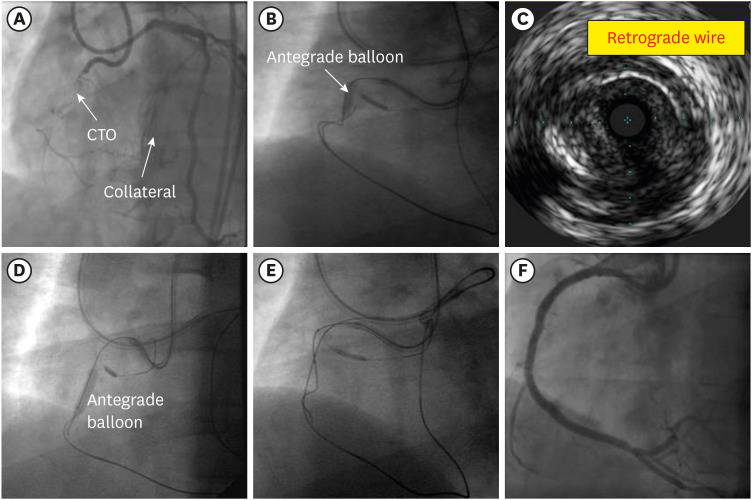 | Figure 5Depiction of IVUS assisted reverse CART. (A) A baseline coronary angiogram showing total occlusion of proximal RCA with good septal collateral channel from LAD. (B) Failure of reverse CART with 3.5 mm balloon at antegrade and retrograde wire overlap zone. (C) Depiction of large size (6 mm) vessel by IVUS. (D) Antegrade inflation of 4.5 mm balloon. (E) Successful navigation of retrograde guidewire into proximal true lumen followed by externalization. (F) Final result after three overlapping DES.CART = controlled antegrade and retrograde tracking; DES = drug-eluting stent; IVUS = intravascular ultrasound; LAD = left anterior descending artery; RCA = right coronary artery.
|
Stent facilitated reverse controlled antegrade and retrograde tracking
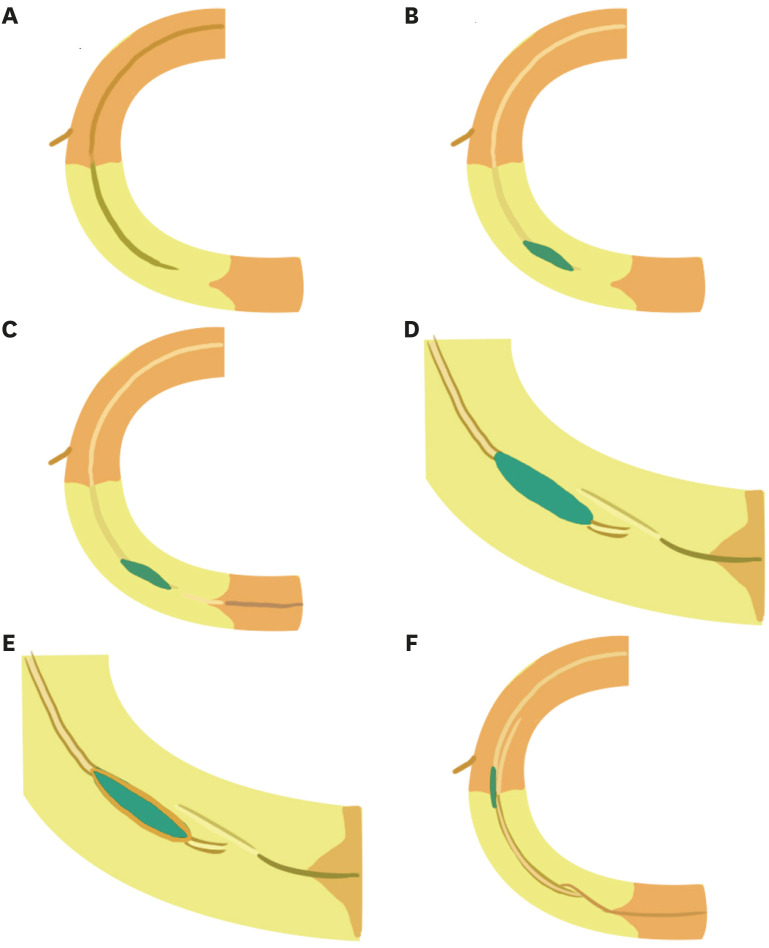 | Figure 6Schematic illustration of contemporary reverse CART. (A) Antegrade preparation depicting navigation of an antegrade guidewire through the occlusion until 5–10 mm proximal to the distal cap with the support of a microcatheter in a case of mid RCA CTO. (B) Advancement of a small balloon to the tip of the antegrade guidewire. (C) Navigation of the retrograde guidewire towards the antegrade balloon after the collateral channel crossing by a guidewire and a microcatheter. (D) The manipulation and gentle push of the retrograde guidewire towards the inflated antegrade balloon catheter (retrograde wire is lateral to balloon in this figure). (E) Navigation of the retrograde guidewire into the space (created by the balloon) after balloon deflation. (F) Negotiation of the retrograde guidewire into the proximal true lumen with sequential antegrade balloon inflation within the CTO segment proximal to the connecting point.CART = controlled antegrade and retrograde tracking; CTO = chronic total occlusion; RCA = right coronary artery.
|
Mother-child reverse controlled antegrade and retrograde tracking
Contemporary reverse controlled antegrade and retrograde tracking
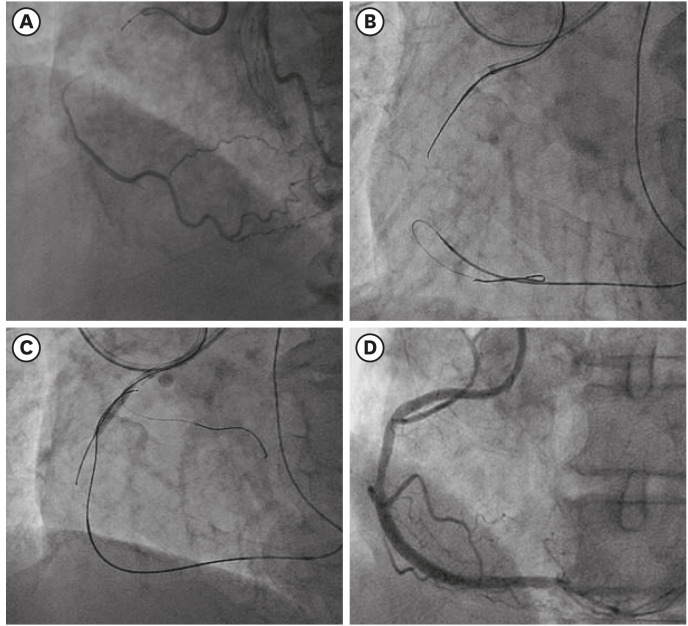 | Figure 7Depiction of contemporary reverse CART. (A) A baseline coronary angiogram depicting CTO of proximal RCA with good septal collateral from LAD. (B) Subintimal position of antegrade guidewire. (C) Antegrade small (2 mm) balloon inflation followed by retrograde penetration of wire into proximal true lumen. (D) Final result after wire externalization and three overlapping DES.CART = controlled antegrade and retrograde tracking; CTO = chronic total occlusion; DES = drug-eluting stent; LAD = left anterior descending artery; RCA = right coronary artery.
|
Shifting reverse controlled antegrade and retrograde tracking
 | Figure 8Schematic illustration of shifting reverse CART. (A) Navigation of a retrograde guidewire into the subintimal space in a case of mid RCA CTO with a small side branch around the proximal cap. (B) Negotiation of an antegrade balloon to the planned connecting point. (C) Inflation of the antegrade balloon in an attempt to create a medial dissection. (D) Creation of a connection between the retrograde subintimal space and the proximal true lumen after balloon deflation. (E) Navigation of the retrograde guidewire into the proximal true lumen through the created connection. (F) Performance of the guidewire externalisation and balloon dilatation.CART = controlled antegrade and retrograde tracking; CTO = chronic total occlusion; RCA = right coronary artery.
|




 PDF
PDF Citation
Citation Print
Print



 XML Download
XML Download